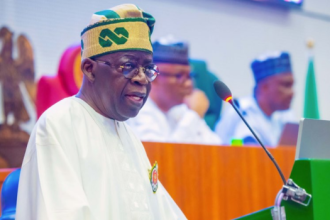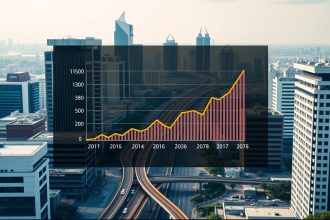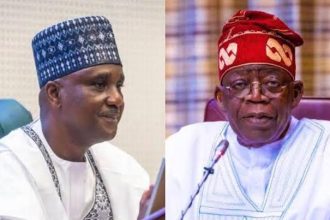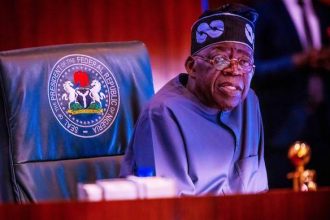Foreign exchange reserves play a crucial role in the global economy, acting as a safety net for countries to weather economic uncertainties and maintain stability in their financial systems. These reserves, often denominated in various foreign currencies, represent the monetary assets held by central banks and monetary authorities of countries across the world. The list provided gives an insight into the foreign exchange reserves of several countries as of the latest available data.
Leading the pack in terms of foreign exchange reserves is China, with an impressive $3.37 trillion held in its coffers. This substantial amount is a testament to China’s economic prowess and its position as a major player in international trade and finance. As the world’s second-largest economy, China’s vast reserves serve as a buffer against financial crises and help it exert significant influence in the global economic landscape.
Following closely behind is Japan, with $1.25 trillion in foreign exchange reserves. Despite its stagnant economic growth in recent years, Japan’s massive reserves act as a stabilizing force for the country’s financial markets and facilitate international transactions.
Switzerland, a nation known for its strong financial sector and stable economy, holds $898 billion in foreign exchange reserves. Switzerland’s reputation as a safe haven for investors has contributed to the accumulation of these reserves, which provide the country with ample resources to manage economic fluctuations.
India, a rapidly growing economy, boasts $609 billion in foreign exchange reserves. These reserves have played a significant role in shielding India from external shocks and allowing it to maintain a favorable balance of payments position.
Russia, with $594 billion in foreign exchange reserves, relies heavily on its vast natural resources for revenue generation. The country’s reserves offer protection against volatile commodity prices and economic sanctions imposed by other nations.
Taiwan, with $562 billion in foreign exchange reserves, demonstrates its robust financial management and export-oriented economy. The reserves provide Taiwan with the flexibility to manage its currency and support its thriving technology and manufacturing sectors.
Hong Kong and South Korea, both with $421 billion in foreign exchange reserves, owe their sizable reserves to their strong international trade and finance activities. Hong Kong’s status as a global financial hub and South Korea’s export-driven economy contribute to their significant reserves.
Saudi Arabia, an oil-rich nation, has $404 billion in foreign exchange reserves. These reserves act as a cushion for the country during periods of fluctuating oil prices and support its economic diversification efforts.
Brazil, with $341 billion in foreign exchange reserves, relies on these assets to manage its currency fluctuations and foster economic stability in a region known for its volatility.
Singapore, a small but highly developed economy, holds $289 billion in foreign exchange reserves, which enable it to manage exchange rate movements and maintain price stability.
Germany, the economic powerhouse of Europe, possesses $277 billion in foreign exchange reserves, bolstering its role as a stabilizing force in the Eurozone.
The United States, despite being the world’s largest economy, has $242 billion in foreign exchange reserves, reflecting its preference for a relatively lower level of reserves due to the U.S. dollar’s status as the world’s primary reserve currency.
France and Thailand follow closely with $238 billion and $225 billion, respectively, in foreign exchange reserves. These reserves help support their economies and maintain financial stability.
Italy, with $211 billion in foreign exchange reserves, faces ongoing economic challenges, but its reserves provide a buffer during times of economic uncertainty.
Israel and Mexico, with $201 billion and $200 billion in foreign exchange reserves, respectively, rely on these assets to manage external economic shocks and foster confidence in their financial markets.
The United Kingdom, with $182 billion in foreign exchange reserves, uses these funds to navigate its post-Brexit economic landscape and maintain its status as a global financial center.
Poland and the Czech Republic, with $180 billion and $140 billion in foreign exchange reserves, respectively, benefit from their prudent economic policies and integration into the European Union’s single market.
Indonesia and the United Arab Emirates (UAE), both with $140 billion and $115 billion in foreign exchange reserves, respectively, rely on these assets to manage their economic stability and growth.
Iraq and Malaysia, with $115 billion and $111 billion in foreign exchange reserves, respectively, use these funds to navigate geopolitical challenges and support their economies.
Canada, with $106 billion in foreign exchange reserves, maintains these assets to manage currency fluctuations and foster economic stability.
The Philippines, with $101 billion in foreign exchange reserves, relies on these funds to manage its external debt and stabilize its financial markets.
Turkey, with $97 billion in foreign exchange reserves, uses these assets to mitigate currency volatility and support its economic growth.
Spain, with $87 billion in foreign exchange reserves, relies on these funds to support its economy, which is closely integrated with the European Union.
Iran and Denmark, with $86 billion and $73 billion in foreign exchange reserves, respectively, use these assets to navigate international sanctions and ensure financial stability.
Norway, with $70 billion in foreign exchange reserves, benefits from its oil wealth and prudent economic management.
South Africa and Colombia, with $61 billion and $58 billion in foreign exchange reserves, respectively, use these assets to manage currency fluctuations and economic challenges.
Australia, with $57 billion in foreign exchange reserves, relies on these funds to manage its currency and support its resource-rich economy.
Kuwait, with $48 billion in foreign exchange reserves, benefits from its oil wealth and uses these assets to manage its currency peg to the U.S. dollar.
Nigeria and Argentina, with $40 billion and $39 billion in foreign exchange reserves, respectively, navigate economic challenges and currency fluctuations with these assets.
Ukraine, Bangladesh, and Afghanistan, with $39 billion, $24 billion, and $9.4 billion in foreign exchange reserves, respectively, use these funds to stabilize their economies and manage external pressures.
Pakistan, with $8.7 billion in foreign exchange reserves, faces ongoing economic challenges but relies on these assets to support its financial stability.
North Korea, with $8 billion in foreign exchange reserves, manages its isolated economy with these limited resources.
The Vatican, with $4 billion in foreign exchange reserves, relies on these assets to support its small but unique economy.
Kenya, with $1.6 billion in foreign exchange reserves, uses these funds to manage its currency and external debt.
Finally, Syria and South Sudan, with $407 million and $73 million in foreign exchange reserves, respectively, face significant economic and geopolitical challenges, resulting in limited reserves.
Foreign exchange reserves play a crucial role in providing countries with a financial safety net, allowing them to navigate economic uncertainties and maintain financial stability. The varying levels of reserves across nations reflect the diverse economic landscapes and geopolitical realities faced by countries around the world. As global economic conditions evolve, the management and utilization of foreign exchange reserves will continue to be a critical aspect of economic policymaking for nations worldwide.












